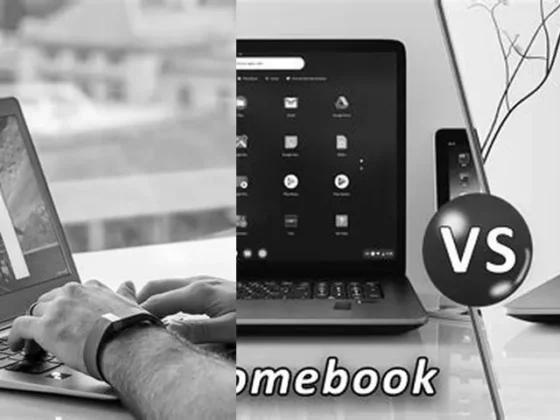How Does Lockdown Browser Catch Cheating? Unveiling the Secrets Behind LockDown Browser’s Anti-Cheating Measures: Are you curious about how LockDown Browser manages to keep cheating at bay during online exams? Well, get ready to uncover the secrets behind this digital invigilator! In this blog post, we will delve into the intricacies of LockDown Browser’s anti-cheating mechanisms and explore its comprehensive monitoring strategies. From understanding the scope of its detection capabilities to addressing its concerns and limitations, we’ve got you covered. So, fasten your seatbelts and join us on this fascinating journey into the world of LockDown Browser. Let’s find out how this powerful tool is revolutionizing modern education!
Understanding LockDown Browser’s Anti-Cheating Mechanisms
With the rise of online education, ensuring the integrity of virtual examinations has become a pressing issue. LockDown Browser, developed by Respondus, is a software solution designed to prevent cheating during online exams. It has evolved into a critical tool for educators who need to administer tests remotely. Let’s delve into the specifics of how LockDown Browser catches cheating and why it’s considered a reliable ally in upholding academic honesty.
Webcam Surveillance and Student Behavior Analysis
The LockDown Browser employs a webcam to monitor students during exams. This feature serves as a digital proctor, scrutinizing every movement and flagging any behavior that may indicate cheating. For instance, if a student leaves the camera’s view for an extended period, if their gaze constantly shifts away from the screen, or if another person enters the frame, these will be marked as suspicious activities. Such vigilance ensures that students remain within the prescribed testing environment, minimizing the chances of dishonest conduct.
Automated Detection and Flagging
Automation is at the core of LockDown Browser’s efficiency. The software is programmed to recognize and flag specific actions that deviate from expected behavior during an exam. Whether it’s a student attempting to open another browser window, accessing unauthorized materials, or interacting with someone off-screen, these actions trigger an alert within the system. The flagged portions or the entirety of the exam video will be brought to the attention of the instructor for further review, thus automating much of the monitoring process.
LockDown Browser’s Comprehensive Monitoring Strategies
Tracking Mouse Movements and Computer Configuration
LockDown Browser doesn’t stop at visual surveillance; it extends its watchful gaze to include mouse movements and analysis of the computer’s configuration. By monitoring how the mouse is being used during the exam, the software can detect patterns that may suggest the student is attempting to access unauthorized resources. Furthermore, by analyzing the computer’s setup, LockDown Browser ensures that only the necessary applications for the exam are running, and any attempt to bypass this setup could be considered a red flag.
LockDown Browser’s Response to Screen Recording Queries
Concerns about privacy and the extent of monitoring have led many to ask, “Can LockDown see your screen?” The answer is yes, to an extent. The LockDown Browser can record the student’s screen, but it only does so according to the parameters set by the instructor. The software itself doesn’t snoop on the entire screen without cause or directive. This targeted approach strikes a balance between maintaining exam integrity and respecting student privacy.
Examining the Scope of LockDown Browser’s Detection Capabilities
What Does LockDown Browser Detect?
As an alternative to in-person proctored tests, LockDown Browser has been equipped to detect a variety of cheating methods. It is sensitive to actions such as accessing another device, consulting hidden notes, or communicating with others in the room. These actions are flagged because they represent a clear departure from the expected behavior of an individual taking an exam solo.
Ensuring Exam Environment Integrity
By controlling the exam environment, LockDown Browser prevents the student from opening new tabs, accessing other applications, or using shortcuts to copy and paste information. This level of control is essential in creating a closed-off testing environment that mirrors the conditions of a physically proctored exam, albeit in a virtual setting.
Addressing the Concerns and Limitations of LockDown Browser
Respecting Privacy While Maintaining Vigilance
The use of webcams and screen monitoring raises legitimate concerns about student privacy. Respondus has taken steps to ensure that the data collected during an exam is used solely for the purpose of upholding academic integrity. The information is handled in compliance with privacy regulations, and only authorized personnel have access to review the flagged content.
Navigating False Positives and Instructor Review
While LockDown Browser is adept at flagging suspicious behavior, it is not infallible. False positives can occur, where innocent actions are misinterpreted as cheating attempts. To counter this, flagged incidents require human review by the instructor, who can exercise judgment and discernment to determine whether an infraction has occurred.
Technological Challenges and Student Support
Technical issues can sometimes impede the smooth functioning of LockDown Browser. A weak internet connection, outdated hardware, or software glitches can affect the system’s ability to accurately monitor an exam. It is essential for institutions to provide technical support to students to mitigate these challenges and ensure that every individual has a fair opportunity to complete their exams without undue stress.
Conclusion: The Role of LockDown Browser in Modern Education
In conclusion, LockDown Browser represents a significant step forward in preserving academic integrity in the digital age. By utilizing webcam surveillance, automated detection, and strict control of the exam environment, it provides a robust solution to the challenge of remote test-taking. While it is not without its limitations and concerns, with proper implementation and conscientious review processes, LockDown Browser can be an effective tool for educators worldwide.
As we continue to adapt to the evolving landscape of education, tools like LockDown Browser will play a pivotal role in ensuring that the transition to online learning does not compromise the values that underpin our educational institutions. With technology on our side, we can look forward to a future where remote exams are conducted with the same level of integrity as their traditional counterparts.
FAQ & Related Questions about How Does Lockdown Browser Catch Cheating?
Q: How does LockDown Browser detect cheating?
A: LockDown Browser detects cheating by using the webcam to identify any suspicious student behavior during the exam.
Q: What techniques does LockDown Browser use to detect cheating?
A: LockDown Browser uses a variety of techniques to detect cheating, such as monitoring student activities, tracking mouse movements, and analyzing computer configuration.
Q: What does LockDown Browser protect during exams?
A: LockDown Browser protects exam questions by blocking print functions, copy-and-paste, and screen-capture programs.
Q: What can LockDown Browser see?
A: LockDown Browser can see and prevent unauthorized access to other applications and websites during exams.
Q: Are there any limitations to what LockDown Browser can detect?
A: Yes, LockDown Browser cannot detect if a student resorts to using an additional mobile device or references notes they prepared beforehand.


